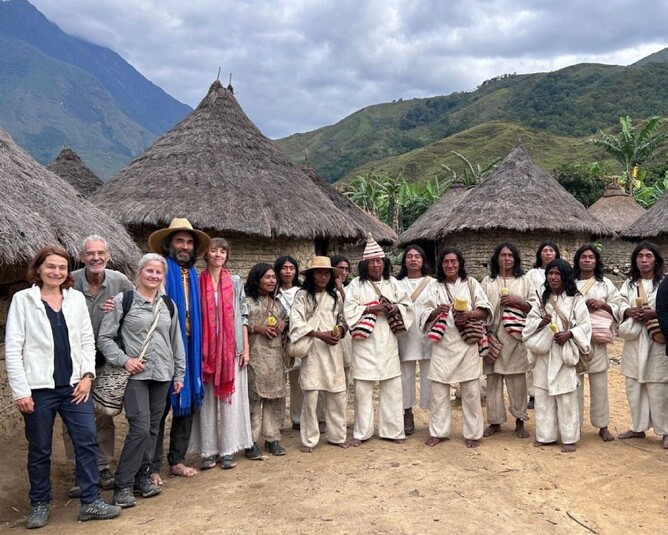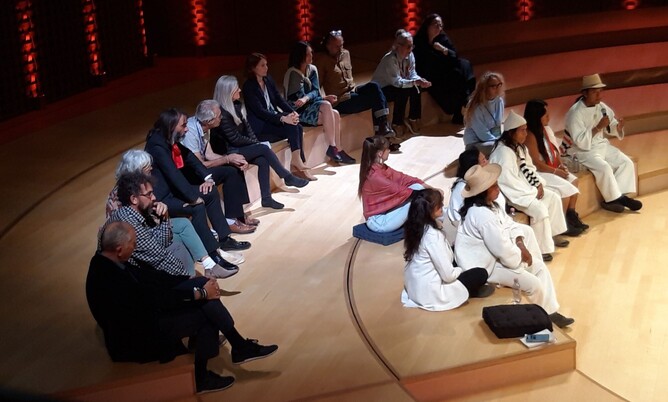Five representatives of the indigenous Colombian Kogi people and around fifty European scientists met in Switzerland and France from 25 September to 17 October 2023 to share their knowledge and carry out a joint diagnosis of the health of vulnerable area in the Rhône basin, Corsica and Ile-de-France.
The meeting was organised by the Tchendukua - Ici et Ailleurs association, founded in 1997 by Eric Julien and Jacqueline Bac. Its mission is to restore to the indigenous Kogi people their ancestral lands in the Sierra Nevada de Santa Marta in Colombia.
500 years after the arrival of the conquistadores in Colombia (1523), a historic dialogue is underway to broaden our view of the world and care for the Earth together. The Rhône basin was the main site for the study of this diagnosis, called "Shikwakala", a term that means "the invisible webs that keep the components of the world alive".
According to Kogi culture, "these invisible webs envelop the entire Earth from East to West. They connect all living beings and maintain the harmony of the Universe. These relationships sustain the world." This term reminds us that all living things are interconnected and interdependent. To ensure our collective survival, it is therefore essential to repair the negative effects of human activity on "nature". The people of the Sierra Nevada de Santa Marta have no words to describe nature, since each of us is nature, constitutes it.
Although indigenous peoples represent only 5% of the world's population, they manage at least 25% of the earth's surface, where 80% of biodiversity is concentrated. Among these societies, the Kogi consider themselves to be the guardians of "Mother Earth" and play an essential role in protecting the biodiversity and ecosystems of the Sierra Nevada de Santa Marta. Their ancestral knowledge was recognised as intangible cultural heritage by UNESCO in 2022.
Their expertise extends beyond their territory, and their knowledge complements that of scientists. In the face of the ecological emergency, the Kogis are coming out of their isolation and reaching out to us to help us understand and repair our territories: a bridge between ancestral and scientific knowledge to heal the Earth together.
The tour ended on 15 October with a conference in the auditorium of the Seine musicale, on the banks of the Seine, which brought together Kogis and scientists in front of a passionate audience.
"The Kogis live solidarity in a fragile world", Eric Julien introduced. They have seen their territory shrink and Tchekundua was able to help them recover over 2,000 hectares. Once again, we trusted each other and we were able to weave something together".
"For us, the most important things are peace and dialogue", the Kogi Governor reiterated, "looking beyond our differences, coming together around what unites us: water, air, mountains... We have the choice and the desire to find a new path of dialogue between scientific knowledge and Kogi knowledge".
He stressed the importance of teaching and education: "We need to invent a new way of teaching, and rediscover a true understanding of nature: it's not something you can find in a library or between four walls, but in the field! You can count on us, together we can create a new path to peace for all young people."


